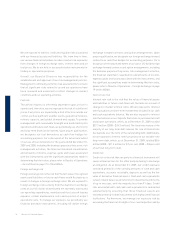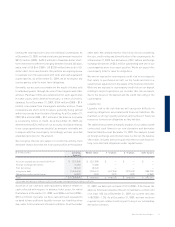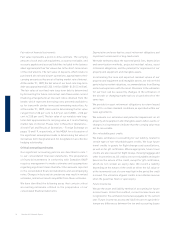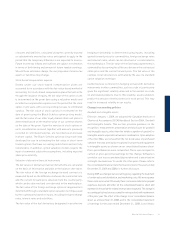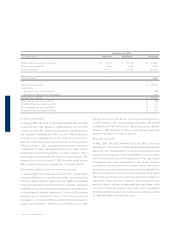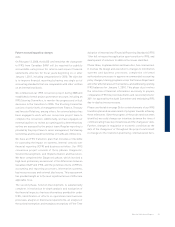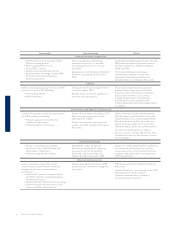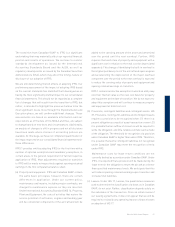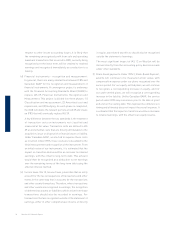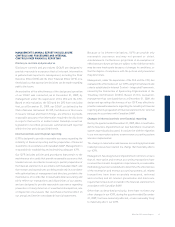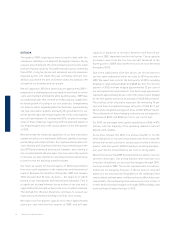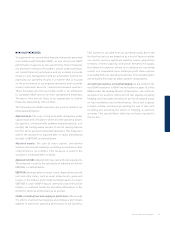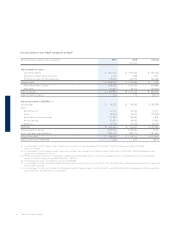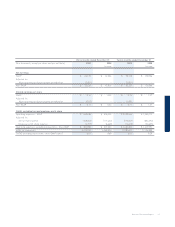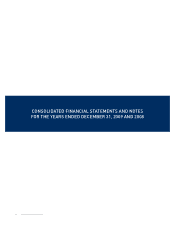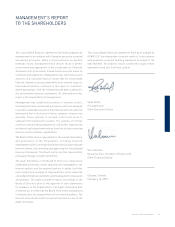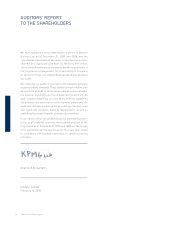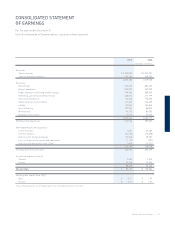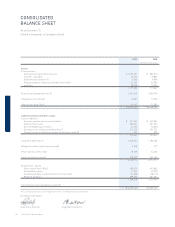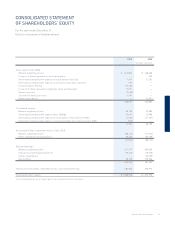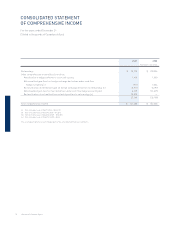Westjet 2009 Annual Report Download - page 70
Download and view the complete annual report
Please find page 70 of the 2009 Westjet annual report below. You can navigate through the pages in the report by either clicking on the pages listed below, or by using the keyword search tool below to find specific information within the annual report.
40 WestJet 2009 Annual Report
capacity is expected to increase between nine and 10 per
cent over 2009, dependent on fl eet utilization. These capacity
increases come from the five new aircraft delivered in the
fourth quarter of 2009 and a further fi ve aircraft to be delivered
throughout 2010.
Due to the stabilization of jet fuel prices, we do not expect to
see the same substantial relief on costs in 2010 as we did in
2009. We expect fuel costs for the fi rst quarter of 2010, excluding
hedging, to range between $0.67 and $0.69 per litre. For the fi rst
quarter of 2010, we have hedged approximately 22 per cent of
our anticipated fuel requirements. The fi xed swap agreements
represent approximately 25 per cent of the total volume hedged
for the fi rst quarter and are at an average of CAD $105 per barrel.
The costless collar structures represent the remaining 75 per
cent and have a weighted average call price of CAD $111 per
barrel and a weighted average put price of CAD $78 per barrel.
The settlements of these hedging contracts are anticipated to
add between $0.01 and $0.02 per litre to our cost of fuel.
For 2010, we anticipate total capital expenditures of $65 to $75
million, with the majority of the spending related to aircraft
deposits and rotables.
As we move forward into 2010, it is unclear whether or not the
initial indications of economic improvement are here to stay. We
believe that we will continue to see pressure on yield in the fi rst
quarter, with fi rst quarter RASM tracking to an anticipated year-
over-year decline of less than fi ve per cent on strong loads.
We further believe that 2009 demonstrated our ability to survive
extreme challenges. Our strong balance sheet and low-cost
structure should help us successfully navigate through 2010,
much as we did in 2009. The recent improvements in economic
trends are encouraging; however, if the recovery is long and
drawn out, we are prepared. Regardless of the challenges that
may lie ahead, we have every confi dence that our WestJetters are
committed to the continued growth and success of our airline. It
is their dedication that brought us through 2009 profi tably, and
we know they will make the best of 2010.
OUTLOOK
Throughout 2009, businesses were forced to deal with the
continuous challenges of a deep and damaging recession. Facing
a severe drop in demand, the airline industry was forced to slash
both pricing and capacity. The additional pressures stemming
from H1N1, rising fuel prices and enhanced security measures
imposed by the U.S. made the year extremely difficult. Our
ability to succeed in the face of all these obstacles speaks to the
strength of our business and our people.
We will approach 2010 the same way we approached 2009 –
prepared for a challenging year and ready to work hard to control
costs and maintain profi tability while building value. 2009 was
a foundational year that centred on enhancing our capabilities
for future growth. Focusing on our cost structure, strengthening
our balance sheet, expanding WestJet Vacations, implementing
two new reservation systems and laying the groundwork for our
airline partnerships and frequent guest and credit card programs
were all key initiatives. As we head into 2010, we plan to leverage
some of these initiatives, beginning with the expected launch of
our frequent guest and credit card programs in the fi rst quarter
of 2010.
We believe that the enhanced capabilities of our new reservation
system will allow us to implement additional seamless strategic
partnerships with other airlines. Our implementation plans for
code-sharing with Southwest Airlines may extend beyond the
late 2010 date previously announced; however, exact timing is
not currently defi ned. We also expect our new reservation system
to increase our opportunities for ancillary revenues and allow us
to better serve the business traveller market.
Our fi nancial results for the fi rst quarter of 2010 should benefi t
from our recent expansion in the transborder and international
market. Between the months of December 2009 and January
2010 we launched 52 new city pairs – the majority of which
belong to our transborder and international schedule. This is
a signifi cant accomplishment for an airline of our size and is
supported by the strength we have seen in our southern markets.
The demand for WestJet Vacations continues to exceed our
expectations and forward bookings continue to be strong.
We expect our fi rst-quarter capacity to increase approximately
seven per cent from the fi rst quarter of 2009, and full-year


